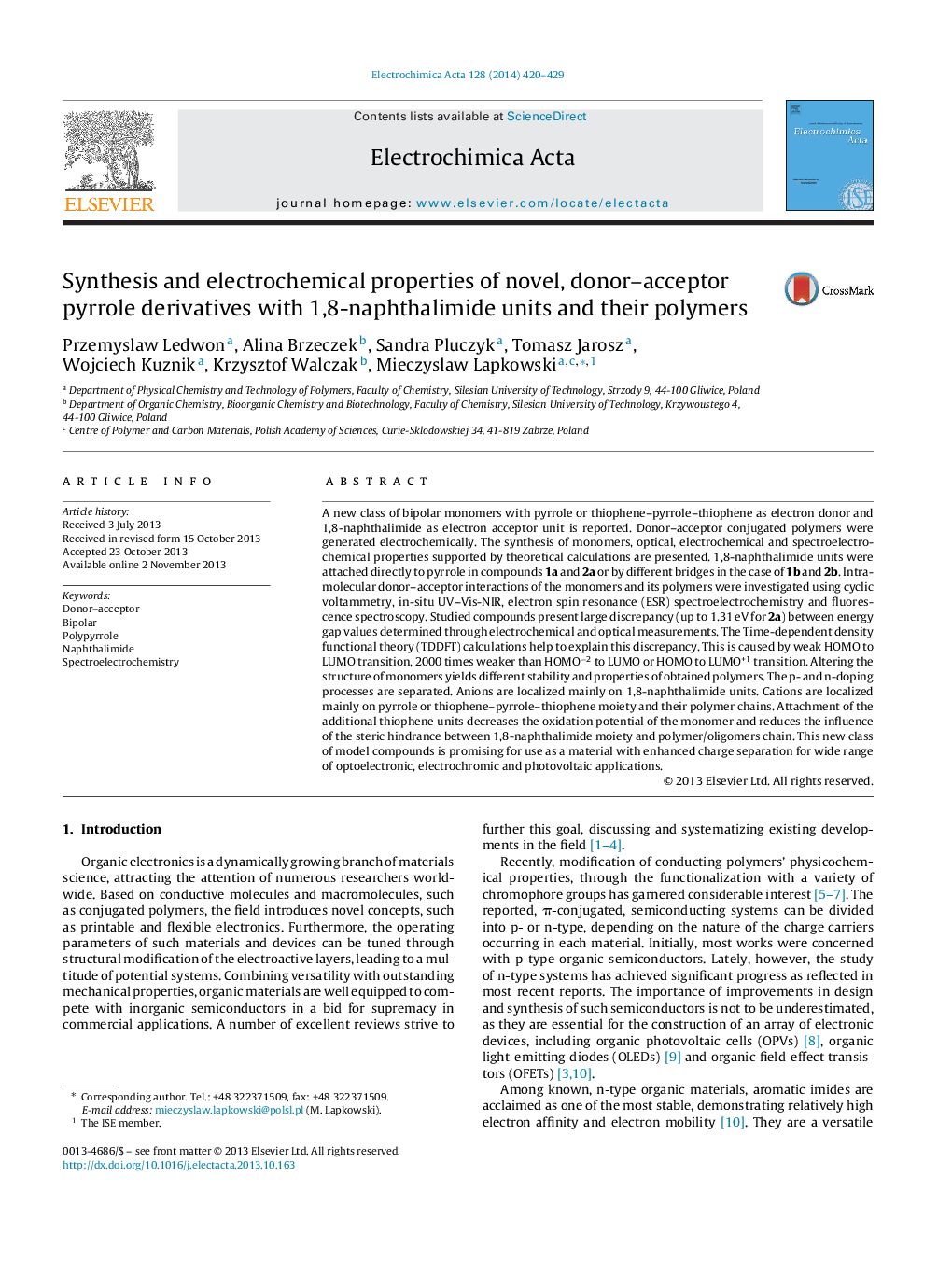| کد مقاله | کد نشریه | سال انتشار | مقاله انگلیسی | نسخه تمام متن |
|---|---|---|---|---|
| 186117 | 459607 | 2014 | 10 صفحه PDF | دانلود رایگان |
A new class of bipolar monomers with pyrrole or thiophene–pyrrole–thiophene as electron donor and 1,8-naphthalimide as electron acceptor unit is reported. Donor–acceptor conjugated polymers were generated electrochemically. The synthesis of monomers, optical, electrochemical and spectroelectrochemical properties supported by theoretical calculations are presented. 1,8-naphthalimide units were attached directly to pyrrole in compounds 1a and 2a or by different bridges in the case of 1b and 2b. Intra-molecular donor–acceptor interactions of the monomers and its polymers were investigated using cyclic voltammetry, in-situ UV–Vis-NIR, electron spin resonance (ESR) spectroelectrochemistry and fluorescence spectroscopy. Studied compounds present large discrepancy (up to 1.31 eV for 2a) between energy gap values determined through electrochemical and optical measurements. The Time-dependent density functional theory (TDDFT) calculations help to explain this discrepancy. This is caused by weak HOMO to LUMO transition, 2000 times weaker than HOMO−2 to LUMO or HOMO to LUMO+1 transition. Altering the structure of monomers yields different stability and properties of obtained polymers. The p- and n-doping processes are separated. Anions are localized mainly on 1,8-naphthalimide units. Cations are localized mainly on pyrrole or thiophene–pyrrole–thiophene moiety and their polymer chains. Attachment of the additional thiophene units decreases the oxidation potential of the monomer and reduces the influence of the steric hindrance between 1,8-naphthalimide moiety and polymer/oligomers chain. This new class of model compounds is promising for use as a material with enhanced charge separation for wide range of optoelectronic, electrochromic and photovoltaic applications.
Journal: Electrochimica Acta - Volume 128, 10 May 2014, Pages 420–429
